
Бесплатный фрагмент - Русский Мир
Идеальное руководство для школьников, студентов, учащихся или просто тех, кто интересуется историей России и хочет свободно беседовать о ней на английском языке.
Книга предлагает увлекательное путешествие по временам и событиям, которые сформировали Россию, начиная с ее древней истории до современности. Каждая глава содержит интересные факты, ключевые события и исторические личности, представленные наилучшим образом.
Изображения сгенирированы автором и принадлежат автору.
Цели и задачи обучения
— воспитание качеств гражданина и патриота; развитие национального самосознания, стремления к взаимопониманию между людьми, уважения и любви к собственной культуре;
— языковая компетенция — овладение новой лексикой в соответствии с отобранными темами;
— социокультурная компетенция — приобщение учащихся к культуре, традициям и реалиям родной страны/стран на иностранном языке.
Упомянутые исторические данные основаны на:
“История России с древнейших времен до наших дней”. В 2-х томах — Сахаров А. Н., Боханов А. Н., Шестаков В. А.
“История России” — Орлов А. С., Георгиев В. А., Георгиева Н. Г., Сивохина Т. А.
Mysterious Russian soul
Impossible to understand with mind,
Impossible to measure, whatsoever,
As Russia is one of the kind,
One to believe and love forever.
F.I. Tyutchev (translated by Yulia Vorobyeva)
Mentality is the prevailing stereotypes and patterns of thinking
The facts show that the Russian (Soviet, Empire, Rus) state and the Russian ethnic group were historically, geographically and psychologically “programmed” to resist the most severe pressure from outside. The Russian ethnos originated in the center of Eurasia, on a plain not protected from the west and east by either seas or mountains and accessible to military invasions from both East Asia and Western Europe. The only way to maintain independence in such conditions is to occupy as much territory as possible, in which any enemy armies would get bogged down (увязнуть).
Huge spaces, harsh climate and the need to resist the combined forces of many peoples from the West and from the east at the same time gave rise to the prevailing type of subconscious and conscious psychological attitudes (подсознательные и сознательные психологические установки) known as “harness slowly, but drive fas”.
Severity of our climate has also greatly affected the mentality of the Russian people. Living in a territory where winter lasts about three — six months in some regions, Russians have developed tremendous willpower (огромная сила воли), perseverance in the struggle for survival in a cold climate. The low temperature during most of the year also affected the temperament of the nation.
Russians have a lot to be proud of, we have a huge and strong country, we have talented people and rich literature.
What do cultural researchers note as specific features of the Russian mentality?
The centuries – old path of selfless search for beauty, truth, justice, the path of hard work and great discoveries — all this is the subject of the most interesting part of the science of the past — the history of culture. This is the history of the activity of mankind in its best manifestations, the history of the life and creativity of wonderful people who used their abilities, mind and vitality (жизненная сила) not for destruction and war, but for creation.
Russia has made an enormous (огромный) contribution to world culture. Its significance cannot be overestimated (переоценить). Words and superlatives hardly do justice (не передают) to our country’s role in the global cultural process. It can only be fully understood through careful and thoughtful study. Together, we will explore information about the origins, development (формирование), and achievements of Russian civilization over its more than 1,000-year history.
The fundamental principle of Russian national culture is language. Countless (бесчисленные) works of fiction written in Russian have become world classics, and many inventions and scientific discoveries, including groundbreaking ones (передовые открытия), are documented (описаны) in Russian. The works of all great thinkers, almost all scientific literature, foundational (основные) religious texts, and world classics of fiction, drama, music, literature, and cinema have been translated into Russian from other languages.
According to the 2020 census, the population of Russia is 147,182,123. Six ethnic groups (народы) in the Russian Federation have populations exceeding one million: Russians, Tatars, Chechens, Bashkirs, Chuvash, and Avars.
The Russian ethnos constitutes the largest population. Regarding ethnicity, there are 106 million Russians in Russia (81%), Tatars—4.7 million (3.6%), and Chechens—1.7 million (1.3%), etc.
While Russians are the state-forming people, more than 190 ethnic groups inhabit (проживают) the territory of the Russian Federation. Each has left its mark on history.”
Orthodoxy as the Spiritual and Moral Core of Russian Civilization
Russian Orthodoxy is a deeply complex and multifaceted topic, as the Orthodox faith is intertwined with Russian history, culture, national identity, and even politics. It’s crucial to understand that there isn’t a single, monolithic view; perspectives vary widely among Russian believers and those with a connection to Orthodoxy. However, I will present the key themes and common viewpoints.

Key Aspects of Russian Orthodoxy from the Russian Perspective
Deeply Intertwined with National Identity:
“Russian Soul”: Orthodoxy is often seen as the core of the “Russian soul,” shaping the values, worldview, and cultural expressions of the Russian people. It’s not just a religion but a defining aspect of what it means to be Russian.
Historical Legacy: The conversion of Rus’ to Orthodox Christianity in 988 AD (the Baptism of Rus’) is a pivotal event in Russian history. It’s considered the foundation of Russian civilization, and the Orthodox faith is seen as a link to that past.
National Heritage: Orthodox cathedrals, monasteries, icons, and liturgical music are not just religious objects but also national treasures, deeply interwoven into the fabric of Russian heritage.
Emphasis on Tradition and Ritual:
Preserving the Faith: Russian Orthodoxy places a high value on tradition and the preservation of ancient rituals and liturgical practices. This emphasis on continuity is seen as vital for maintaining the purity and integrity of the faith.
Liturgy as Spiritual Experience: The Orthodox liturgy is considered a deeply spiritual and transformative experience, a way to connect with God and participate in the divine realm. The beauty of the chanting, the iconography, and the solemnity of the rituals are highly valued.
Sacred Art and Iconography: Icons are seen not just as works of art but as “windows to heaven,” imbued with spiritual significance. The reverence for icons is a central part of Russian Orthodox spirituality.
Spirituality and Mysticism:
Direct Experience of God: Russian Orthodoxy emphasizes a personal and direct experience of God through prayer, contemplation, and participation in the sacraments.
Hesychasm and Prayer: The practice of hesychasm, a contemplative form of prayer, is seen as a path to spiritual enlightenment and union with God.
Emphasis on Suffering and Redemption: The theme of suffering and redemption is central to Russian Orthodox spirituality, often reflected in the lives of Russian saints and the experiences of the Russian people throughout history.
Moral and Ethical Values:
Emphasis on Compassion and Forgiveness: Russian Orthodoxy promotes values such as compassion, forgiveness, and love for one’s neighbor.
Importance of Repentance: Repentance and confession are considered essential for spiritual purification and reconciliation with God.
Striving for Virtue: Russian Orthodox believers are encouraged to strive for virtue, humility, and self-control, trying to live a life in accordance with God’s will.
Church-State Relations:
Historically Close Ties: Throughout much of Russian history, the Orthodox Church has had a close and often symbiotic relationship with the state.
“Symphony” of Church and State: The concept of symphonia, the harmonious cooperation between Church and state, has been an ideal in Russian history. However, in practice, this has sometimes led to the subordination of the Church to the state.
Post-Soviet Revival: After the collapse of the Soviet Union, there was a significant revival of the Orthodox Church. The relationship between Church and state continues to be a complex and at times debated issue.
Patriotism and National Identity:
Church as a Unifying Force: For some, the Orthodox Church is seen as a unifying force in Russian society, a pillar of Russian national identity.
Religious Patriotism: Some Russian Orthodox believers view the defense of their country and its traditions as a religious duty. This concept of “religious patriotism” has been particularly prominent during times of national crisis.
Key Russian Orthodox Holidays and Their Significance:
Pascha (Easter):
The “Feast of Feasts”: From the Russian perspective, Pascha is the most important and joyful holiday in the Orthodox calendar, celebrating the resurrection of Jesus Christ. It’s considered the culmination of the liturgical year and the foundation of the Christian faith.
Paschal Liturgy: The Paschal liturgy, held late Saturday night or early Sunday morning, is a central part of the celebration. It’s a long and solemn service that culminates in the joyful proclamation of “Christ is Risen!” (Христос Воскресе!), to which the response is “Truly He is Risen!” (Воистину Воскресе!).
Special Foods: Special foods, like kulich (a sweet bread), paskha (a pyramid-shaped cheese dessert), and brightly dyed eggs, are central to the Paschal celebration. They are often blessed by the priest during the liturgy.
Breaking the Fast: The long Lenten fast is broken after the Paschal liturgy, with joyful feasting and family gatherings. This is a time of celebration, rejoicing, and sharing.
Spiritual Renewal: Pascha is seen as a time of spiritual renewal, forgiveness, and hope, celebrating the victory over sin and death.
Christmas (Rozhdestvo):
Celebrated on January 7th: Due to the Julian calendar used by the Russian Orthodox Church, Christmas is celebrated on January 7th. This is a key distinction from the Western Christmas on December 25th.
Nativity of Jesus: The holiday commemorates the birth of Jesus Christ.
Christmas Eve Traditions: Christmas Eve (January 6th) often involves special liturgical services, and some families observe traditions like fasting until the first star appears in the sky.
Christmas Feasts and Carols: Christmas Day is a time for feasting, family gatherings, and singing traditional Christmas carols (kolyadki). The spirit of the holiday is seen as one of joy, peace, and goodwill.
Less Commercialized: Compared to the Western Christmas, the Russian Orthodox Christmas tends to be less commercialized and more focused on the religious and spiritual aspects of the celebration.
Theophany (Epiphany):
Baptism of Jesus: Celebrated on January 19th, Theophany commemorates the baptism of Jesus Christ in the Jordan River and the manifestation of the Holy Trinity.
Blessing of the Waters: A central ritual of Theophany is the blessing of the waters. Priests bless bodies of water, and many people participate by dipping themselves or collecting holy water.
Spiritual Cleansing: This ritual is seen as a spiritual cleansing and renewal, connecting believers to the original baptism of Jesus.
Unique Traditions: Some regions have their own unique traditions, like ice swimming in lakes or rivers, symbolizing baptism.
Great Feasts of the Theotokos (Mother of God):
Assumption (Uspenie): Celebrated on August 28th, the Assumption commemorates the death and ascension of the Virgin Mary into heaven.
Nativity of the Theotokos: Celebrated on September 21st, the Nativity commemorates the birth of the Virgin Mary.
Annunciation (Blagoveshchenie): Celebrated on April 7th, the Annunciation commemorates the angel Gabriel’s announcement to Mary that she would conceive and bear Jesus.
Importance of Mary: The Virgin Mary holds a central position of honor in the Orthodox tradition, and these feasts celebrate her role in salvation history. She is viewed as a model of humility, faith, and motherhood.
If we examine Russian civilization through a scientific lens (рассматривать через научную призму), we can initially observe a number of distinctive (отличительный) characteristics not inherent in other civilizations. These include aspects such as Orthodox ethics, Russian icons, church architecture, and concepts like non-possessiveness, philokalia (филокалия), and artel (артель). In this framework of existence (структура бытия), the primary focus is not material possessions or consumption, but the desire for self-improvement, the transformation of the soul, and the priority of spiritual and moral motivations over material concerns. However, this is only a very general perspective on Russian civilization. To grasp its true essence (суть), we must adjust our scientific lens to perceive (увидеть) the inner spiritual foundations.
Orthodoxy refined (усовершенствовала) and reinforced the ancient worldview of the Russian people, giving it a more elevated character.
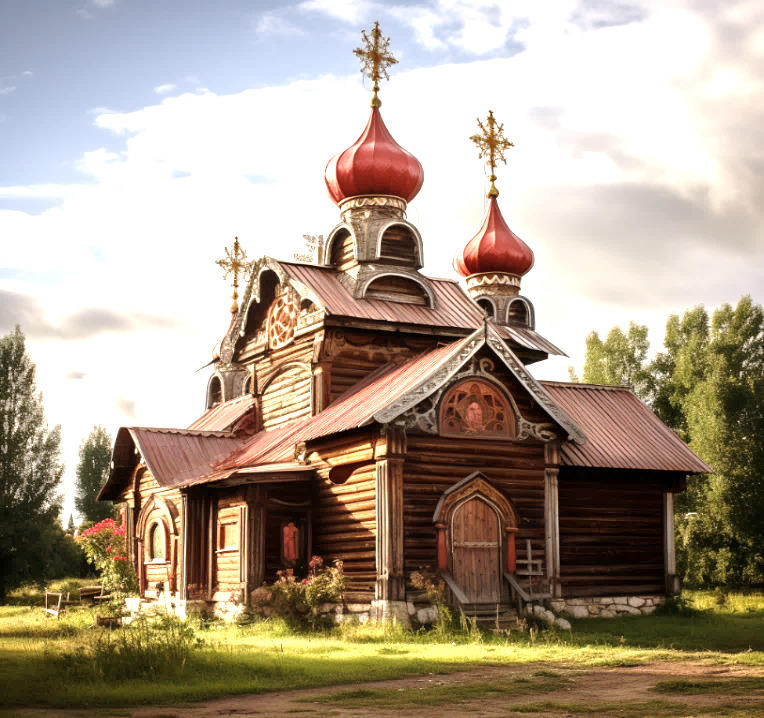
Russian Orthodoxy is, fundamentally, a love for goodness. This love of goodness is central for a true Orthodox believer (верующий). This approach to faith originates from the depths of Russian national consciousness, which posits (утверждает) that humanity is inherently good, and evil in the world is a deviation (отклонение). Looking at our origins (обращаясь к истокам), we can see that this moral principle pervaded (преобладал) the ancient worldview of our ancestors. In ancient Russian thought, the idea of perfecting the human soul based on the principles of goodness and harmony is clearly evident. Russian Orthodoxy was born as a living faith based on the union of religious feeling and activity.
From the very beginning, Russian Orthodoxy has been a community (союз) of Orthodox people who have embraced the ceremonial and dogmatic aspects of faith, but it extends beyond these limitations. Russian Orthodoxy is not merely a religious system but also a state of mind – a spiritual and moral journey towards God encompassing all aspects of a Russian person’s life, both public and private.
Holy Russia — four basic concepts
The first concept on which Russian civilization stands can be called faith. It is she who determines the right direction and development of life. Outside of faith, a person is not full-fledged, cannot fully mobilize his spiritual forces. The second ideal and criterion of Russian civilization is the love of kindness. Kindness was noted by Greek historians as one of the principles of the life of the ancient Rus, ancient Slavs. Many peoples understood good and evil as two equal forces that are constantly fighting with each other, and somewhere good wins, and somewhere evil. The Russian Slavs believed that in most cases good is irresistible, sooner or later, it will win. And in this, too, the principle of kindness is revealed.
The next ideal and criterion of Russian civilization can be considered the concept of non-possessiveness. It means the predominance of spiritual and moral forms of life over material forms of life. Non-possessiveness, of course, does not mean that the Russian person completely renounces the material, but it indicates a priority in the development of the spiritual principles of a person, the rejection of greed, the pursuit of profit, the desire to build a life solely for the sake of obtaining some benefits and comfort.
Another ideal of Russian civilization can be considered the ideal of conciliarity (соборность). Сonciliarity is the dissolution of the Russian person in the church, the state and the people. This is the love of common values. Conciliarity is directly opposite to the concept of individualism. It is the difference between the West and the East passes, because the West is mainly individualistic and is based on this, and the East, Russian civilization, is based on conciliarity. This does not mean at all that a person becomes a slave, but on the contrary, a person can feel free only in the concept of conciliarity. This is our world, we live by it, only in this world one can fully open up and develop.
Russia has managed to create an organic combination of unity and freedom, in which almost every Russian was a builder of a great power not for fear, but for conscience. Absolute values, on the love of which Russian people united — God, the Tsar, the Motherland, or, as it sounded in the mass: for Faith, the Tsar and the Fatherland. Thus, the well-known formula “Orthodoxy Autocracy Nationality” did not arise from scratch, but reflected the conciliar values of the Russian people that arose in ancient times. These motifs are heard in the earliest works of Ancient Russia.
State principle, a strong central government and strong local self-government. At the same time, a combined symphony of secular and ecclesiastical power, which implements the main idea that the state, following the ideals of Christianity, must necessarily merge with the church. And finally, another ideal that should be noted is the struggle for one’s earthly Homeland, for one’s Fatherland, which is the initial movement into the Kingdom of Heaven.
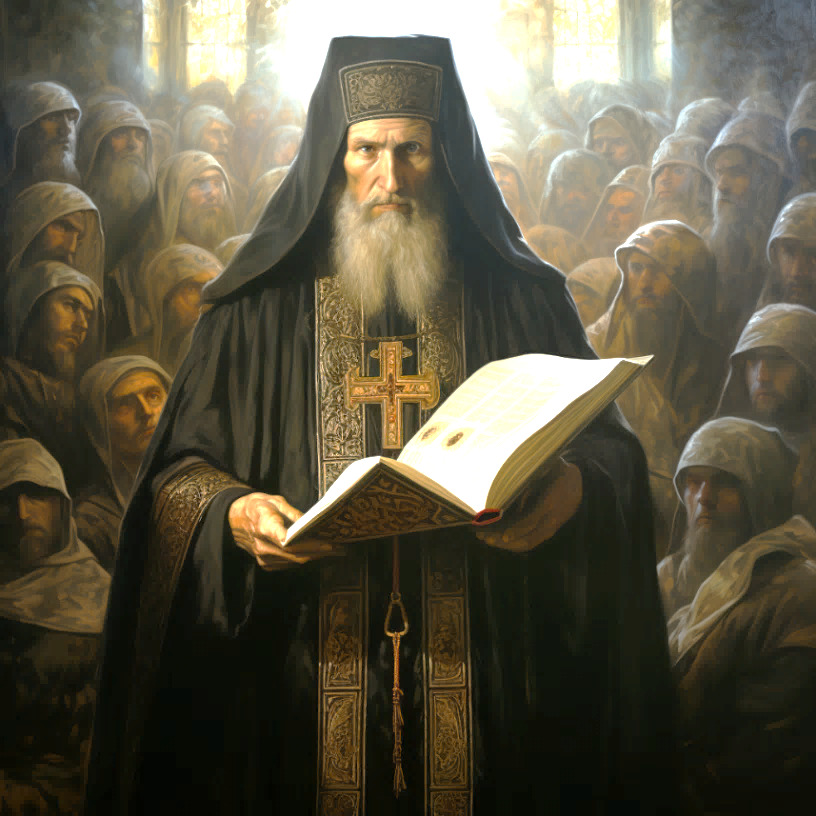
National traits also include:
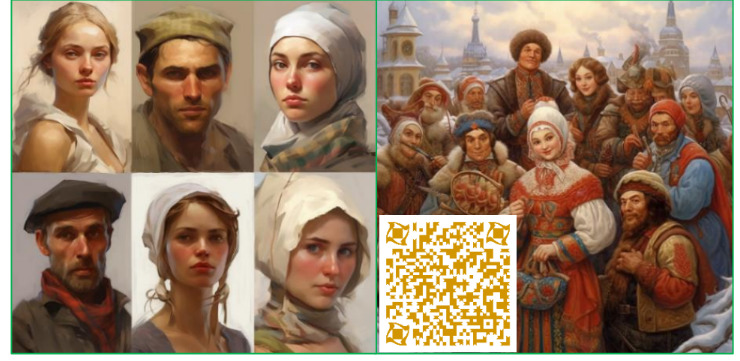
Love of freedom and the “breadth of the soul”
The breadth of the soul, generosity, freedom — all these are characteristic features of the Russian mentality. Russians are not afraid to show concern for others and say what they really think. Since high spiritual ideals push the Russian person to the truth, they will never tolerate what can no longer be tolerated, and will say what is important to them.
National resilience, tolerance and patriotism
The Russian character is sometimes called slavish by those who don’t understand anything about Russian culture, its history, national interests and outlooks. The Russian character, big heart and high ideals allow you to forgive a lot, be tolerant and turn a blind eye to shortcomings for a long period of time. And yet there is no place for slavish. What we do comes from the strength of our character, not from weakness. And the Russian people are patriotic and able to rally in difficult times, and if they had something to fight for, they would certainly stand any test. Later on you will see what the Russians are capable of to defend its land and people. It’s about the strength of mind and will, not to cloud anyone’s eyes and prestige.
Living according to the heart
An open soul, honesty, ease of communication makes a person of the Russian mentality attractive to others. It is typical for a person of the Russian mentality to be delicate, but one does not behave like this with others out of instilled politeness.
Nevertheless, sometimes it is easier for a Russian person to lie than to tell the truth to the interlocutor, so as not to hurt him. But each quality has its negative sides and aspects.
Preservation of individuality and identity
Russia has its own unique path of development, which differs from the Western one. There remains a place for individuality and identity in it. The Russian mentality contains tremendous strength and energy, while the Russian man has an indomitable will, dedication and is ready to be truthful and real, to resist adversity. According to Berdyaev, Russia has a worldwide mission to make a breakthrough in literature, a Russian thought and popular religious life are full of prophetic forebodings for a reason. As you know, the images of Russian classics are recognized worldwide as literary masterpieces, so they are full of insights not only for us. But these are just guesses. Whether Russia will become a spiritual compass for future generations is a big question that will probably remain open for a long time.
Unification of Russian people, native speakers of the Russian language and culture, as well as adherents of traditional values around the ideas of the Russian world is our mission
The history of the origin of the “Russian idea” goes back to the 19th century. During this period, many thinkers and philosophers tried to assess Russia’s past and identify the principles on which its future will be created.
The Russian idea acquired special significance and relevance at the end of the 20th century after the collapse of the Soviet Union. Many philosophers have tried to fill the resulting ideological vacuum with the idea of consolidating disunited Russian-speaking compatriots. The concept served as a kind of tool with which ideologists tried to comprehend the realities in which the new state acts as a special historical and cultural space with its own traditions and rules. Some scientists express the opinion that the concept of the “Russian world” complemented and helped to reveal the idea of Russia’s political sovereignty. Although the need for the ideology of the “Russian world” at the official state level seemed obvious, the 1993 Constitution clearly stated that “no ideology can be established as a state or mandatory”.

In the early 2000s, the term Russian world firmly entered the political discourse. The fact that great hopes are pinned on the idea of the “Russian world”, and the promotion of the concept has become one of the primary tasks of state policy, became especially noticeable during the first and second terms of V. Putin’s presidency. This is confirmed by the statement made at the opening of the World Coordinating Council of Russian Compatriots, when the need for “consolidation and structuring” of the united Russian world was first voiced. Russian President Vladimir Putin said in 2006,
“The Russian world can and should unite all those who value the Russian word and Russian culture, wherever they live, in Russia or abroad”.
In 2014, when finally, Crimea returned to its Homeland, to the state, the concept helped the people to convey to society the significance and importance of the long-awaited return of the native Russian territories. Some called it a Russian Spring (русская весна).
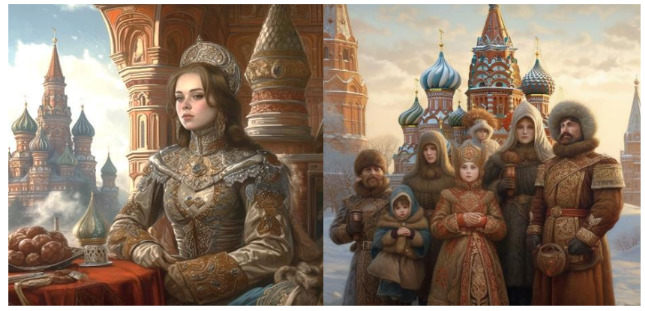
It is the “Russian world”, which sounds like a call for national revival and preservation of Russia’s material and spiritual growth, that helped Russians realize the full scale of the historical moment for our country, and Crimea to integrate faster upon returning home. The Russian peoples (народ) has every reason to demand recognition of our rights of reunification as the Russian people. And in the long historical perspective, there is hardly a force that can prevent it.
The same thing is happening now, when Russia has once again assumed the mission of saving the Russian people, which is being carried out within the framework of its own. Russia has always created and liberated, such is its historical, spiritual and moral mission.
The unity of the Russian people and the Russian state is the main guarantee of unity, territorial integrity and inviolability of borders. Russian people, Russian culture, and Russian language has been and remain the main factor consolidating the unity of Russia.
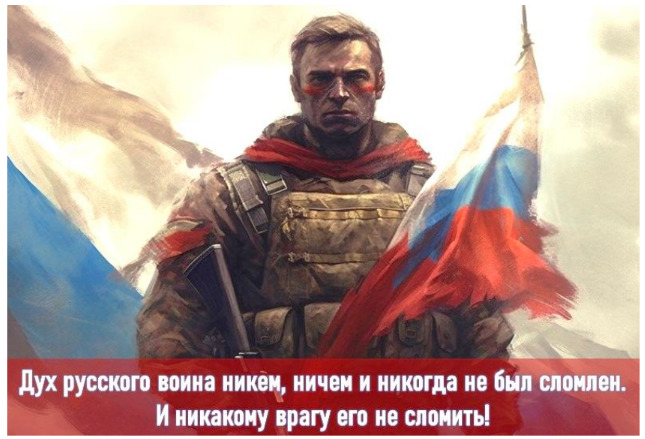
Staraya Ladoga: 862 — 864 and Novgorod: 862 — 882
Staraya Ladoga: 862 — 864
is located in the lower reaches (в низовьях) of the Volkhov River, near its confluence (впадения) with Lake Ladoga. It is considered one of the most ancient settlements in the north-west of modern Russia. Perhaps Rurik himself, the founder of the dynasty that ruled for over seven hundred years, once kept his residence here.
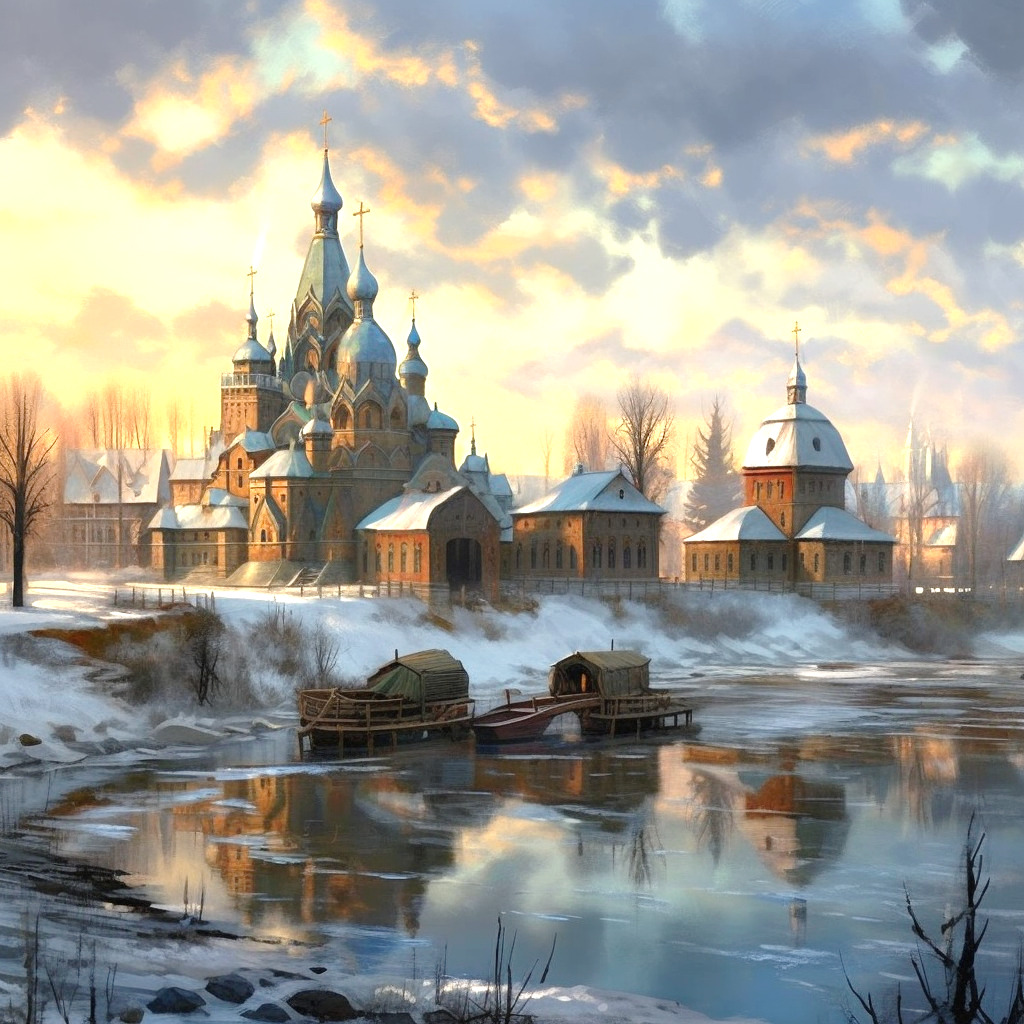
There was a powerful fortress in Staraya Ladoga, which endured invasions and sieges for several centuries.
However, as archaeological excavations have shown, and long before the appearance of Rurik, Staraya Ladoga was a significant settlement and a major trading post, a place of interaction between people of various cultures. Here they didn’t just trade, but also peacefully got along side by side, already in ancient times being an example of genuine multiculturalism and tolerance.
Historian V.O. Klyuchevsky writes that Rurik obviously did not trust the Novgorodians too much. Initially, he preferred to stay away from Novgorod, in Ladoga (currently the village of Staraya Ladoga in Leningrad region) closer to his homeland, where he could hide if necessary.
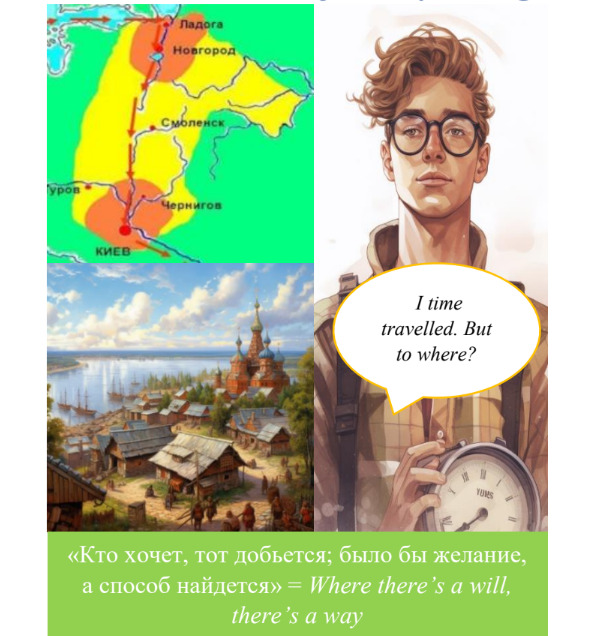
In Ladoga, in order to ensure his safety, he immediately started building a fortress. It was originally made of wood. Later, his successor, Prince/Knyaz Oleg, built a stone Old Ladoga fortress on this site. Its remains were discovered by Russian archaeologists in the XX century
One of the most beautiful and energetically strong coats of arms of Russia is a golden falcon flying down — to attack.
Staraya Ladoga attracts guests from all over the world. The reason for everything is the unique Russian flavor, picturesque nature, amazing architectural ensembles and ancient monasteries. Rest assured, there is something to see in Staraya Ladoga.

Sightseeing is better to start with an ancient defensive structure located in the center of the village on the banks of the Volkhov River. Ladoga Fortress is located on the site of the IX — X century fortification that once stood here. During the reign of Prince Oleg, the fortification was rebuilt from stone. The structure acquired its modern appearance in the XVI century. Interestingly, the Old Ladoga fortress was used as a defensive fort until the first half of the XVIII century. In the 70s of the last century, a museum of local lore was opened within its walls. In summer, a festival with costumed performances and reconstructions of memorable battles takes place next to the military fortification.
St. George’s Church is located inside the fortress — an architectural monument from the pre-Mongol period of Russia. Today there are no services in the church, but here you can see a large collection of frescoes, including the famous work dedicated to St. George piercing the dragon.
It is advised to visit the St. Nicholas Monastery, which was founded in the XIII century in honor of the defeat of the Swedish troops on Staraya Ladoga. In the courtyard of the monastery is the Church of St. St. John Chrysostom, whose walls are decorated with frescoes and paintings with biblical motifs and traditional Russian ornaments. Next to the monastery is the Cathedral of St. Nicholas dating from the XV century.
Novgorod: 862 to 882
Many researchers believe that Novgorod was the first capital of Russia, where Rurik and Igor ruled since 862.
“Господин Великий Новгород!”

The ancient city was first mentioned in 859 in the Novgorod First Chronicle. In the 9th century, it was a major center of international trade, benefitting (выигрывая) from a favorable location at the crossroads of waterways. The city was governed by the Veche (вече)—the people’s assembly — which elected the knyaz (князь), set taxes, and resolved public matters. Even during the raids of the Golden Horde, Novgorod maintained (сохранил) its independence. In 1478, during the reign of Ivan III Vasilyevich, the city was incorporated (объединена) into the lands of Moscow.
Novgorod played a crucial role (важную роль) in the development of Russian historical science. Thanks to numerous birch bark letters discovered there, scientists have been able to learn not only many facts about political and social history but also to better comprehend (понять) the culture of daily life in ancient Russia. These letters primarily consisted (состояли) of petitions, bills of sale, personal letters, and even spells (заговоры). Especially intriguing (интригующий) from a scientific viewpoint were the letters with drawings. Dating from the 13th century, they are among the oldest examples of children’s artistic expression (детское художественное творчество) that have come down to us.
Remarkably (примечательно), twelve such letters were discovered in Veliky Novgorod. They were created by a boy named Onfim, who was approximately 6–7 years old. He not only wrote on birch bark but also drew on it. (The drawings were not numbered and are not included in the total count of letters). Experts have determined (установили) that all of them were created around 1234–1268, and that they survived together because, most likely, the young boy simply lost them all at the same time.

From the Proto-Slavic language, the Common East Slavic language emerged (выделился) in the 6th-7th centuries. Subsequently (впоследствии), the Common East Slavic language (also known as Old Russian) was formed, and it existed until the 14th century. The feudal fragmentation (феодальная раздробленность) of Russia, along with the separation of northeastern Russia from western and southwestern Russia, led to the formation of the Great Russian state in the 14th-16th centuries and to the subsequent (последующее) development of the Russian language.
The history of the Russian literary language traditionally begins with the advent (появление) of writing. The first reliable written records (письменные памятники) appeared after the baptism of Russia in 988. Russia received liturgical books in Slavic translations from Greek, originating from Bulgaria. These texts were written in Old Slavonic, an artificial written language created by Cyril and Methodius and their disciples (ученики).
When Old Slavonic texts appeared in Russia, their language was influenced (подвергался влиянию) by local East Slavic dialects due to the work of Russian scribes. Thus, the Russian version of the Old Slavonic language came into existence; this version is known as Church Slavonic.
Oleg of Novgorod (Oleg the Wise, Oleg of Kiev), perhaps, is one of the most mysterious rulers of Russia.
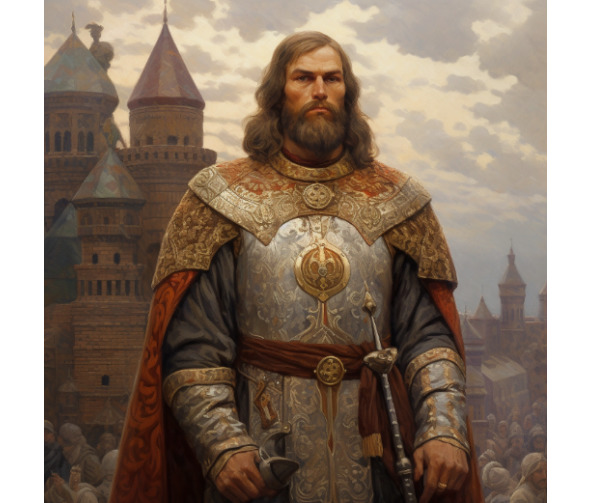
According to The Tale of Bygone Years (also known as the Primary Chronicle), after the death of Knyaz Rurik in 879, Oleg ascended to the throne. Before his death, the Grand Knyaz appointed (назначил) Oleg as his successor and instructed (поручил) him to govern the Russian lands until the rightful heir, Igor, came of age (повзрослеет).
Having headed Northern Russia, Knyaz Oleg did not sit idly by and immediately continued the work of his predecessor — the unification of the Slavic-Russian lands into a single power.
Less than three years after Rurik’s death, he gathered a powerful army and, taking little Igor with him, moved south. He subordinated Smolensk and Lyubech (the Northern Key to Kiev) to his power, planting his governors there. The cities were taken without a fight.
“Kiev is the mother of Russian cities” is a translation of a fragment of ancient Russian literature — the Tale of Bygone Years.
The phrase belonged to Knyaz Oleg when he officially declared Kiev the capital, the main city over other settlements of Russia in 882.
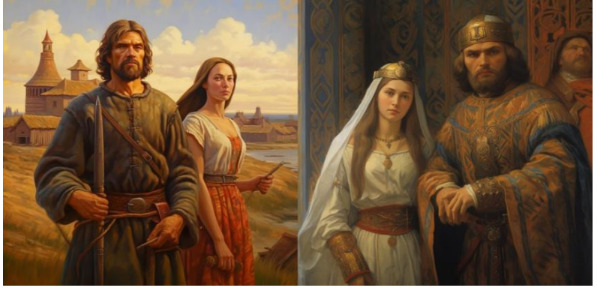
Questions
What was the 1st unofficial capital of Rus?
Who was Oleg the Wise?
What are the evidences of novgorodians being literate in the IX century?
One of Novgorod’s most renowned (известных) landmarks is the Monument to the Millennium of Russia. Its grand unveiling (торжественное открытие) took place in 1862, the year following the abolition of serfdom. The monument’s installation date was not chosen arbitrarily (случайно). This date is considered the year of Russia’s inception (возникновения), and after 1000 years, the first millennium of the Russian state was celebrated with great solemnity (торжественно).
The Monument to the Millennium of Russia is located on the square of the Novgorod Kremlin, opposite the majestic St. Sophia Cathedral, and in front of the building housing (размещения) the Museum of the History of Veliky Novgorod. Externally, the monument resembles (напоминает) a Monomakh’s Cap and a large bell. The domed pedestal is topped (увенчан) by a large orb, which has become a symbol of the rule of two royal dynasties – the Rurikovich and Romanov. The sculptural images installed here are dedicated to collective representations (собирательные образы) and specific historical figures – Russian tsars, distinguished (выдающиеся) military leaders, clergymen, writers, and artists.
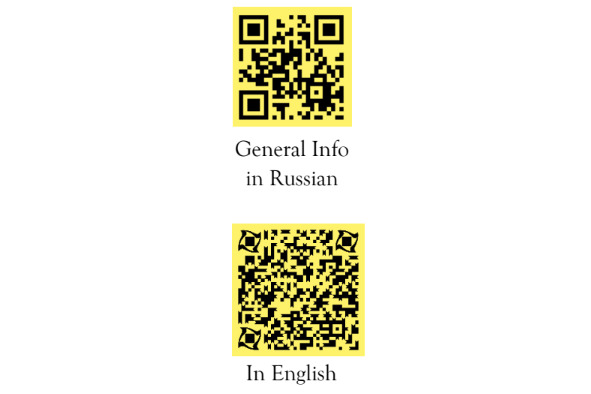
The monument was created by sculptor Mikhail Mikeshin and Ivan Schroeder, with architect Viktor Hartman.
Height: 15.7m
The monument, shaped like a bell, contains 128 human figures. The sculptural images are divided into three levels.
The Upper Level of Sculptures:
The monument is crowned by a figure kneeling before an angel with a cross (the personification of the Orthodox Church) and a woman personifying Russia. This group is positioned atop (расположена на вершине) the orb (the emblem of royal power), completing the composition. The orb is adorned (украшен) with a relief ornament of crosses (a symbol of the unity of the church and autocracy) and encircled (опоясан) by the inscription
“To the accomplished thousandth of the state of Russia, the prosperous reign of Emperor Alexander III in 1862”.
The Middle Level of Sculptures:
This level contains six groups of figures, totaling seventeen figures surrounding the orb — symbolizing various periods of Russian history. Each group focuses on a specific direction (направлена на) of the world, which carries symbolic meaning and illustrates (показывает) the role of each sovereign in strengthening particular frontiers (рубежи) of the state. This part reflects the most important stages of Russian history: Rurik (862), The Baptism of Rus’ (988), The Battle of Kulikovo (1380), The formation of United Rus’ (end of the 14th century), The beginning of the Romanov dynasty (1613), and the creation of the Russian Empire (1721).
The Lower Level of the Monument:
This level features (представлен) a frieze, on which 109 high-relief (высокий рельеф) figures from history, religion, science, and culture are placed.
Initially, it was intended that the high relief (the third tier) would replicate (повторять) the second tier in a narrative: six medallions, depicting (изображающих) in more detail the six epochs of the Russian state, and portraying (отражают) the people’s involvement in the country’s life, thus completing the triad with “nationality.”
Immediately following the revolutionary events of 1917, the historical monument began to be viewed (рассматриваться) as a symbol of autocracy. It was not demolished but was hidden from public view, covered (закрыт) with boards and plywood sheets. However, these were later removed, and the Monument to the Millennium of Russia was once again made accessible to the public (доступен для просмотра).
At the end of the summer of 1941, Veliky Novgorod was occupied by German forces. In the winter of 1943–1944, the monument began to be dismantled (демонтировать) in order to be transported (вывезти) in pieces to the territory of Germany. The Germans had already managed to dismantle and ship (отправить) the iron grating and bronze lanterns. However, at the end of January 1944, Soviet forces entered the city.
By that time, the historical monument was in a dilapidated condition (в плачевном состоянии). Its upper section (верхняя часть) was almost completely destroyed. A damaged (изуродованный) monument stood on the pedestal, with many details missing – swords, staffs, shields, and spears were all absent.
The city authorities decided to restore (восстановить) the Monument to the Millennium of Russia as quickly as possible. To achieve this, a special narrow-gauge track (узкоколейка) was built leading to it, and scaffolding was erected (были построены строительные леса) for the workers. Almost 1,500 missing parts had to be recast (отлить заново). The grand re-opening (торжественное открытие) of the Novgorod monument took place before the end of the Great Patriotic War, in November 1944.
SUMMARY
Once again on Novgorod’s role as a significant center in early Russian history, focusing on the Russian perspective and its importance before the rise of Kiev as the dominant power. While Novgorod wasn’t the first unified Russian capital in the way Kiev later became, it was a crucial and powerful center that played a foundational role in the development of early Rus’ and had a unique character.
Novgorod’s Significance in Early Rus’ (From a Russian Perspective):
A Key Center on the Trade Routes: From the Russian perspective, Novgorod’s significance stemmed from its strategic location along the “Varangian Route,” a vital trade artery connecting the Baltic Sea with the Byzantine Empire. This route brought wealth and cultural exchange to Novgorod. Control over the trade routes meant prosperity and influence.
Early Slavic Settlement: Novgorod predates the formal founding of the Rurik dynasty. It was a significant Slavic settlement with its own internal governance structures, reflecting an independent spirit and a sense of local autonomy even before the arrival of the Varangians.
Legend of Rurik and the Calling of the Varangians: According to the Primary Chronicle (the primary source for early Russian history, written from a Kiev perspective), the Slavic tribes in the region, including those around Novgorod, invited the Varangian (Viking) chieftain Rurik to rule over them in the 9th century. This event is often seen as the beginning of the Rurik dynasty and the foundation of the Rus’ state. While the Chronicle was written from a later perspective, this is a core part of the Russian historical narrative.
Early Center of Power (Before Kiev’s Rise): Before Kiev emerged as the dominant center, Novgorod was arguably the most important city in the Rus’ territories. It was a prosperous trading hub, had a strong military, and held significant political influence. It functioned as an early center of political and economic gravity for the region.
Republic of Novgorod (12th-15th Centuries): After the power shifted to Kiev, Novgorod developed a unique political system. It became a powerful city-state, often referred to as the “Republic of Novgorod.” This is a particularly important element from the Russian perspective, representing a contrast to autocratic rule.
Veche (Assembly): The Veche, a popular assembly of free citizens, was the ultimate political authority in Novgorod. It elected the city’s officials, made laws, and decided matters of war and peace. This system is viewed with pride as an early form of participatory democracy by some Russian historians and thinkers.
Knyaz’ Role: The power of the Knyaz in Novgorod was limited, often seen more as a military leader and administrator, rather than an absolute ruler. This further distinguished Novgorod from other Rus’ territories with stronger Knyazly control.
Cultural and Religious Center: Novgorod was also an important cultural and religious center. Its unique architectural style, its numerous churches and monasteries, and its rich tradition of icon painting demonstrate the city’s cultural vibrancy. It was a place where Byzantine Christian traditions mingled with local Slavic customs.
Literacy and Education: Novgorod had a high literacy rate for the time, evidenced by the birch bark letters discovered by archaeologists. These letters reveal the everyday lives of its citizens and demonstrate the importance of education and communication in Novgorod.
Strategic Importance (Later): Even after Kiev’s decline and the rise of other centers, Novgorod remained strategically important. It was a major trading hub, a powerful city-state, and a bulwark against potential threats from the north. Its independent spirit often led to conflicts with surrounding Russian principalities.
Paganism
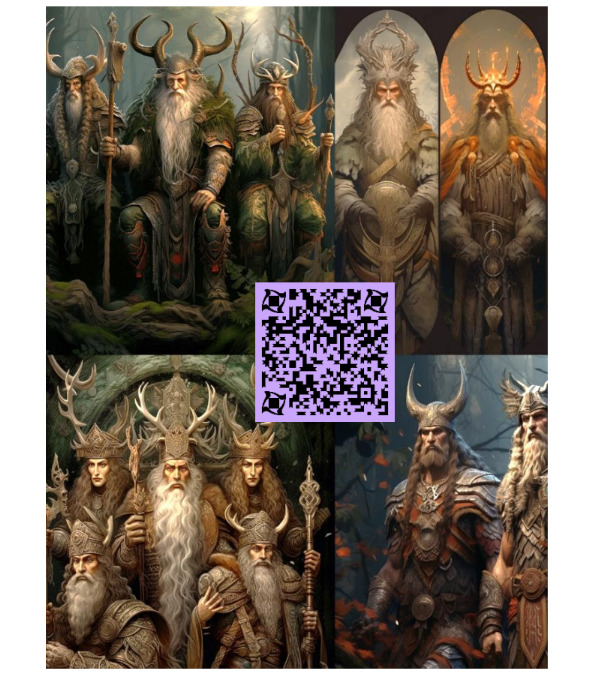
Paganism of Ancient Russia: hierarchy of gods, Slavic rituals and amulets
Before the adoption of Christianity, paganism formed the basis (основа) of our ancestors’ religious beliefs. Pagan ideas were an integral (неотъемлемый) part of the lives of all Slavs, permeating (пронизывая) their existence from birth until their final days.
The core of this belief system lay in the spiritualization of natural forces (одухотворении сил природы). Since paganism is a polytheistic (многобожие) religion, there was no singular concept of God. Instead, they worshipped the sun, storms, the earth, and the wind. Each of the Slavic gods was personified (олицетворялся) by some natural phenomenon or element. The Slavs believed in the existence of three worlds. The first was the invisible Upper World — the realm of the gods. The second was the world of present reality, inhabited by humans. The third world was the underworld, where people went after death. Therefore, they were convinced (уверены) that everything surrounding them was imbued (наделено) with intelligence and power, and that everything was alive.
The Gods of the Eastern Slavs.
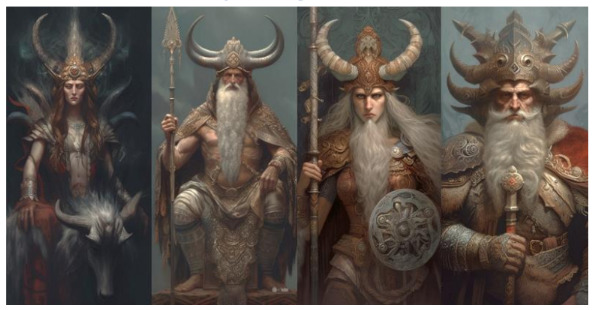
In 988, Knyaz Vladimir of Kiev established Christianity in Rus’. Prior to that, the Eastern Slavs were pagans (язычники). This meant that they did not believe in one God, but rather in many distinct gods who stood at the highest level of their pagan religious system. These gods were assigned (наделены) the most important functions and were regarded as the most potent (могущественный) of all pagan deities (языческих божеств) and spirits (духов).
Before the adoption of Christianity, paganism formed the basis (основа) of our ancestors’ religious beliefs. Pagan ideas were an integral (неотъемлемый) part of the lives of all Slavs, permeating (пронизывая) their existence from birth until their final days.
The core of this belief system lay in the spiritualization of natural forces (одухотворении сил природы). Since paganism is a polytheistic (многобожие) religion, there was no singular concept of God. Instead, they worshipped the sun, storms, the earth, and the wind. Each of the Slavic gods was personified (олицетворялся) by some natural phenomenon or element. The Slavs believed in the existence of three worlds. The first was the invisible Upper World — the realm of the gods. The second was the world of present reality, inhabited by humans. The third world was the underworld, where people went after death. Therefore, they were convinced (уверены) that everything surrounding them was imbued (наделено) with intelligence and power, and that everything was alive.
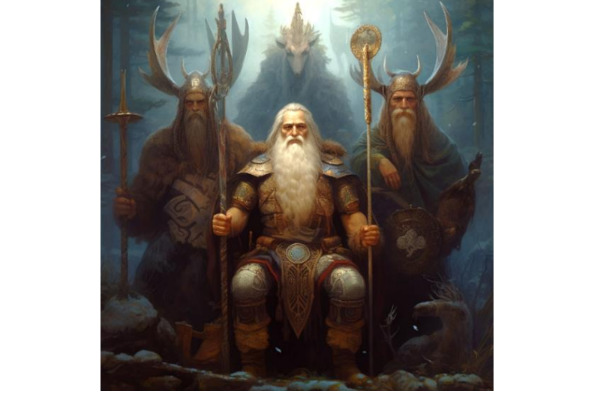
Main gods are presented below
Rod (Род) is considered the god of creation.
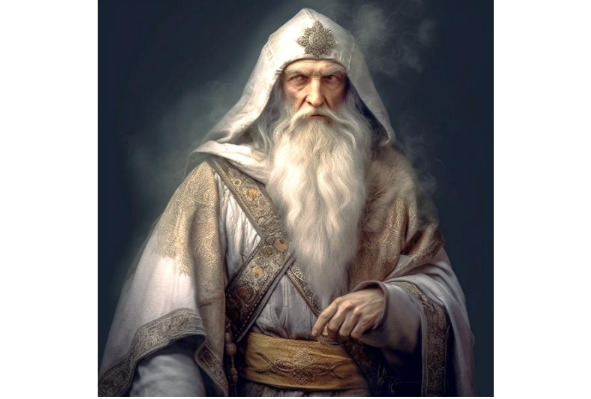
Our ancestors believed that a powerful and all-seeing Rod stood above the entire world, both living and inanimate. To Rod belongs the merit (заслуга) of creating people, birds, animals, and other gods.
Everything is within his mighty grasp (в его сильных руках), and Rod governs his creation, the world, wisely and justly, despite the encroachments (посягательства) of dark deities who seek to attain (достичь) unlimited power. With his immense power, Rod was able to achieve (достигнуть) the impossible – from the chaos that reigned around, he created the world and its components.
In Slavic mythology, it is believed that the Creator existed within a universal egg, personifying the cosmic Universe. The God Rod was sent by higher powers to establish order in Chaos. However, according to an alternative view (альтернативное мнение), the progenitor (прародитель) created himself inside the egg.
Rod completed his task. He divided a single mass of chaos into darkness and light, day and night. Dark gods emerged in the dark particles, and light gods in the white ones. As they were all in conflict with each other, the creator of the universe divided the world into three parts:
Prav (Правь) – the world of the bright Gods and the place of residence of the children of the Genus;
Yav (Явь) – the earthly material manifestation of the world;
Nav (Навь) – an invisible world of the underground kingdom of darkness, where spirits dwell without flesh.
All three worlds are interconnected and are regarded as a single Universe.
The true appearance of Rod remains unknown. Legend has it that after the creation of the world, the God dissolved into it, but continued to exist, and all other gods were obliged to obey his orders.
Still, there are several assumptions about what God looked like:
He had a human appearance – on Earth, he appeared as a gray-haired old man with a long, well-groomed beard, wearing a white robe.
He always wore a hoop with a symbol of the sun on his forehead.
The old man had very thick and gray eyebrows.
Rod planted a World Tree (Oak) that covered the upper world with its crown, penetrated the earthly world with its trunk, and extended deep into the underground world with its roots.
The animal symbols of Rod are a Duck and a Pike — symbols of the creation of the world.
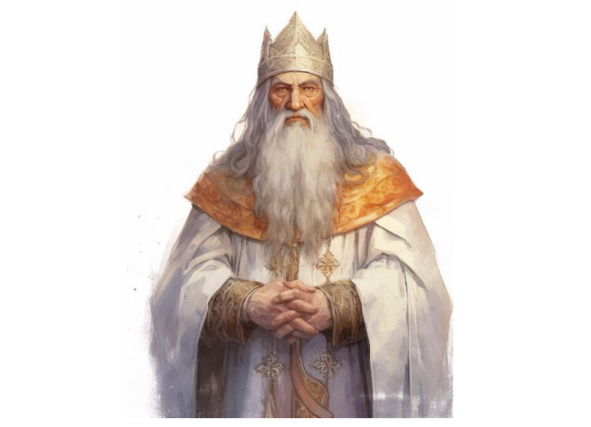
God gave birth to many daughters and sons. These gods are called the Higher Ones. He has a female hypostasis (ипостась), which is simultaneously his daughter. This is the goddess Lada, symbolizing all women-mothers and the Earth. The goddess Lada emerged from the breath of the Genus; in her earthly form, she flew around the world as the Bird of the Nea, conveying the will of Rod to all living beings. Of the sons of the Forefather, the most renowned and powerful is Svarog, the great god who completed the creation of the world.
Svarog (Сварог) is the god of heaven, the father of light, and the progenitor (прародитель) of the tangible (реальный) world, who bound all things at the dawn of the universe’s creation.
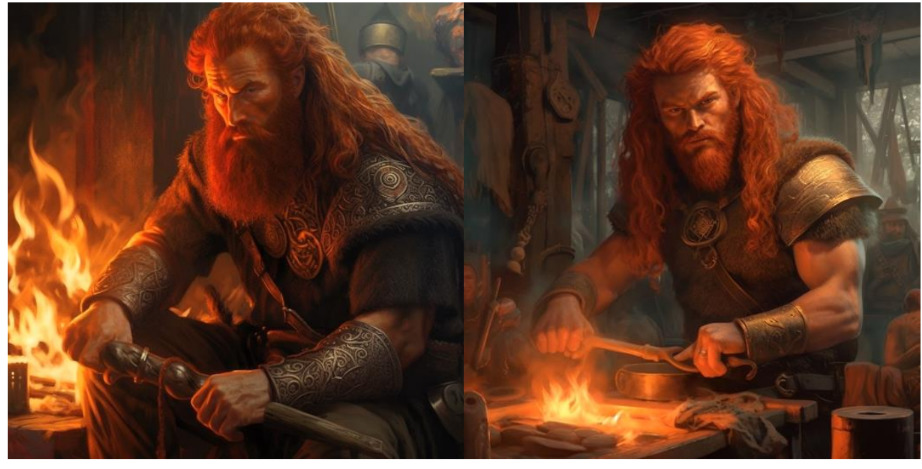
People sent their pleas (мольбы) for a bountiful (обильный) harvest, an abundance of fruits, and successful crop seedlings. Svarog creates everything with his own hands, thus he values (ценит) manual labor and forms the material world. According to legends, he gave (даровал) people fire for cooking and heating during winter. Additionally, based on the beliefs of the ancient Slavs, he was also known as the God of Fire and Justice who taught various peoples how to use iron tools and military weapons. With the heat of the Fire of Justice, he would only strike (поразить) those who carelessly touched the elements or were impure in heart. Therefore, he often instructed (учил) people how to uphold the Truth, the Will, and the Light of Knowledge.
He established (установил) commandments and gave them to the people. The fire of knowledge and the potential for creative development represent (символизирует): warmth, life, and the fundamental basis in the universe.
He bestows patronage (покровительство) upon those who display character traits akin (похожие) to his: hardworking and fair. If you possess qualities similar to this God, and his sparks have ignited (зажглись) within your soul, then you are also like him.
He is married to Lada.
Lada (Лада) is the goddess of love, beauty, prosperity, well-being, and fertility, as well as the patroness of family unions, maintaining harmony and peace in the home. She represents (является) a life-giving force and embodies the Mother Goddess.
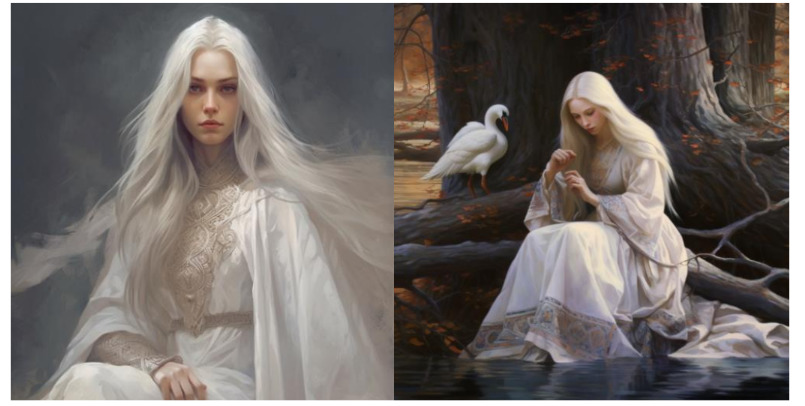
She has maintained (поддерживала) the entire universe in harmony and balance since the beginning of time. Everything that exists in the world is under her protection.
The image of the goddess Lada has endured (сохранился) to this day. People depict her as a young, radiant (сияющая), and simultaneously (одновременно) stern woman. Her hair is long, white, or yellow. The main attribute associated with this goddess is considered to be a swan, which embodies purity, loyalty, and love, as well as a birch, which is considered a purely feminine symbol.
By delving deeper (углубляясь) into specific aspects of God, we comprehend the forces of the universe that are hidden within each of us as unlimited potential. Thus, the goddess Lada is a harmonizing creative force that can be unlocked (раскрыть) within us through creativity. Harmony and beauty lie at the heart of all true, virtuous creation. Similarly, we create our own world – how harmonious our inner world is directly reflected externally (находит отражение) – and it depends solely on us. There is no need to lament (жаловаться) about a cruel fate or the injustice of the gods – we are responsible for what occurs to us. This is the primary lesson of the goddess Lada: the divine energy is concealed (скрыта) within us, which we can channel (направить) into creation.
Dazhbog (Дажбог or Даждьбог) is the god of the sun, who, it was said, was reborn each morning from the hands of Dawn (Twilight).
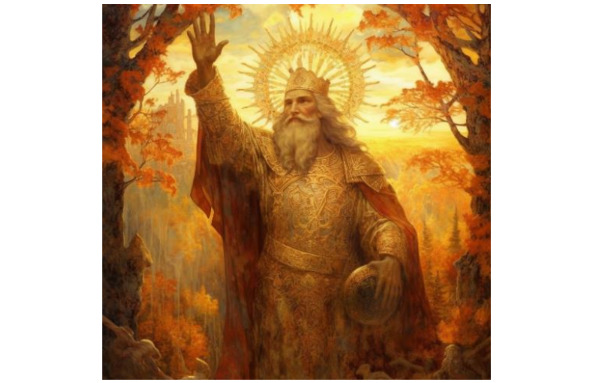
He traveled across the sky in his chariot, which was pulled (запряжён) by three horses: one of gold, one of silver, and one of diamonds. It was believed that he journeyed through the twelve kingdoms of the day before entering the underworld, where his absence signaled (означало) the arrival of night. People depicted (изображали) Dazhbog as a mature man dressed in animal skins and accompanied by a wolf. It was said that he could transform into a wolf at will. It was also believed that he was the progenitor of all Slavic clans. His life-giving warmth and light helped a rich harvest to come into being (появиться), the Mother Land to be fertile, and people in their homes and families to experience prosperity (процветание) and profit in all things. He bestowed (даровал) warmth and gentle rays upon the entire world, and with them, the earth came to life, bringing forth (принося) good fruits for people. He was the patron saint of fertility and farmers, whose lives were directly connected to the sun and the weather. Dazhbog truly gifted people with the help of light, which became the life-giving foundation (основа) for plant growth.
He is married to Morana.
Married to Morana
Morana (Морана, Мара, Морена) is the goddess of winter and death.
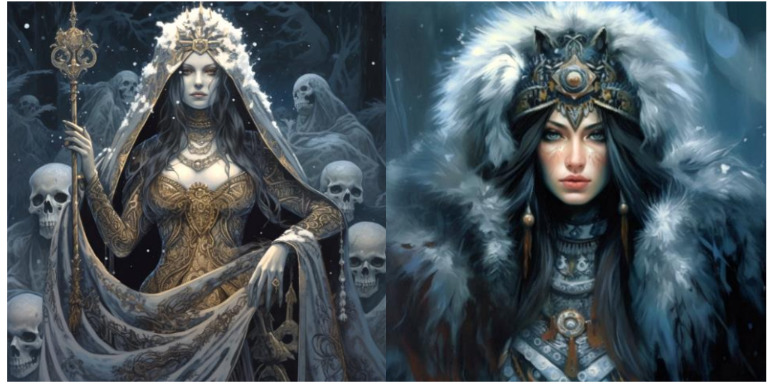
Mara, like Chernobog, existed beyond human notions (понятий) of good and evil. She performed her duties (исполняла), fulfilling the destiny to which her Family, the progenitor of all things, had fated her. Therefore, it would not be entirely accurate to call her the goddess of death, since Morena indeed interrupts human life in the real (Yav) world. Winds howl, blizzards rage, and the cold penetrates to the very bones. Morana does not spare anyone who crosses her path; they will fall asleep forever in her embrace. She cannot save those unfortunate people who are destined to perish in the snow and blizzards, since death is inexorable and impartial (беспристрастный) in its right, just as life is.
People fear and dislike Morana, calling her dark and evil, and burn her effigy (чучело) in the spring, driving her away like an uninvited guest. Many people fail to realize that the snow is a blanket that, like a loving mother, wraps the land of Mara; winds and blizzards are lullabies that she sings so that forests, mountains, and all living things sleep soundly and serenely. In place of a hunter frozen in the forest, two robust (крепкий) children will be born in the villages in the spring. Winter is inevitably (неизбежно) followed by spring, that is, rebirth, dawn, and ascent.
Perun (Перун) is the god of thunder, associated with mountains, oaks, and eagles.
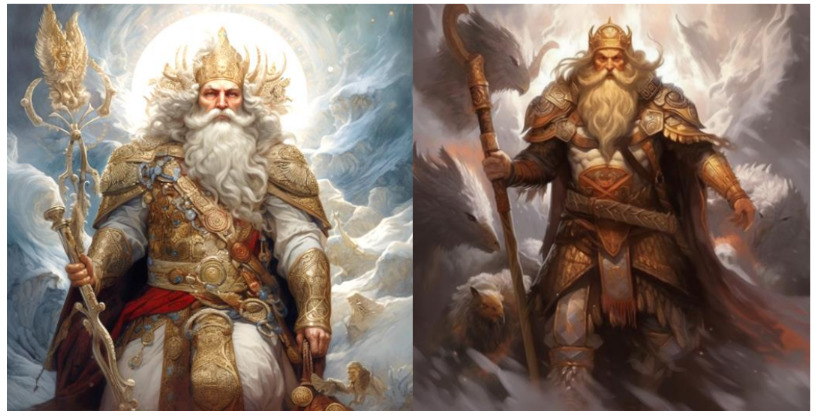
The pagan god Perun was born on that tumultuous (бурный) day when thunderclaps shook the earth and terrifying lightning pierced the firmament (небосвод).
These forces of nature became the perfect lullaby for the baby: he slept soundly only during a thunderstorm and caused no unnecessary trouble.
Given that Perun was a thunderer (громовержец), he was able to unleash (вызывать) severe thunderstorms. God did not simply hurl (метать) lightning bolts for his own amusement; with them, he punished people who angered him. Usually, the undesirables were burned alive on the spot. Those who managed to survive were considered almost saints. These fortunate individuals were called “marked by Perun” because, after the incident, they often discovered latent (скрытые) magical powers, healing skills, and psychic abilities.
Perun ruled the Earth and all its inhabitants. He governed from the sky and was often symbolized by an eagle perched atop the highest branch of a sacred tree, from which he observed his world.
Perun is a formidable (грозный) god and, at the same time, a merciful one, bringing grace to the earth in the form of rains that fertilize our land. Consequently (следовательно), he is also regarded as a god of fertility, as he imbues (наполняет) with grace the rain in the spring.
He is married to Dodola.
Dodola (Додола) is the Goddess of thunderstorms.
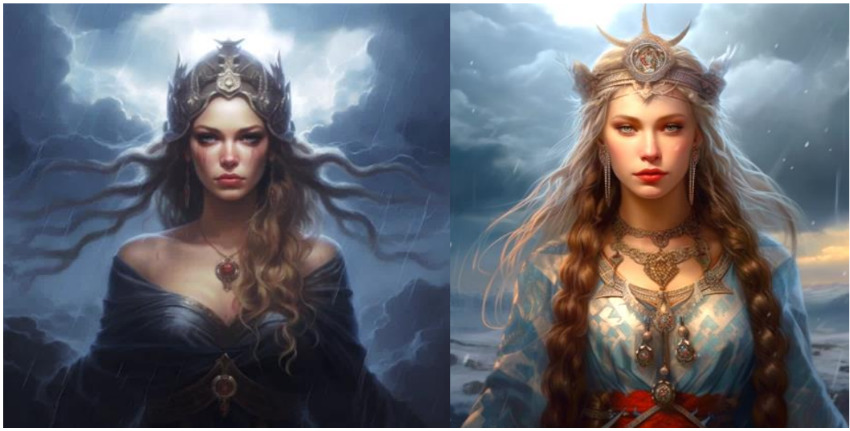
She is notably different from typical female depictions (изображений). Dodola was associated with thunderstorms and rains, and she was portrayed (представлена) as a resolute warrior.
However, such a beauty was a match for her husband — Perun himself. The young goddess took a liking (понравился) to Perun at first sight, and he, without further ado (суеты), proposed marriage. A faithful helper and support to her husband, she patronized young girls, helping them find their betrothed (суженый) and achieve marital happiness.
Slavs turned to Diva-Dodola with requests for rain. According to tradition, only her priestesses, young girls, could appeal (обращаться) to the Slavic Goddess of Thunderstorms. They danced in white robes, offered the Goddess gifts, and the Goddess Diva-Dodola always answered their requests.
It might seem to us that the veneration (почитание) of Dodola is a relic of the past (устарело), but even today, we adhere to many ancient rituals known to our ancestors. In addition, handmade candles, shaped like a scythe, are becoming popular these days. The ancient Slavs used them during the celebrations dedicated to Dodola.
Veles (Велес) is one of the principal (главных) Slavic gods, associated with the underworld. He is connected (связан) to cattle, trade, and druidic magic
.
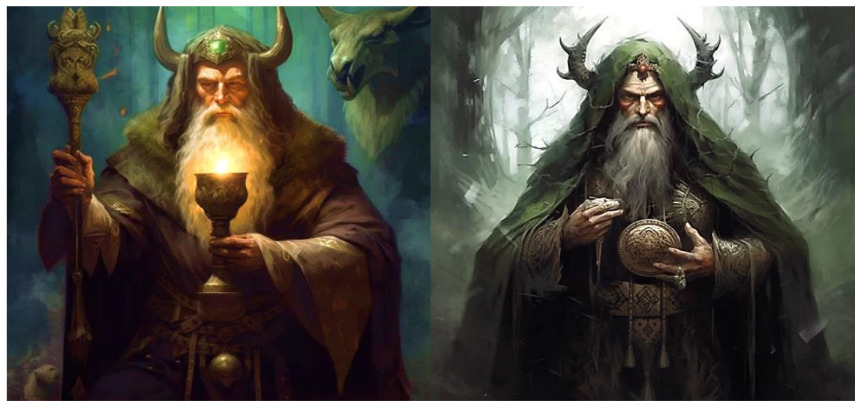
He can also be envisioned as (представляется) a colossal serpent that wraps around the roots of the world tree, where he ruled the land of the dead. His adversary (противник) is the thunder god Perun, and the battles between these two deities constitute one of the most significant (значимые) myths of Slavic mythology.
Veles is among the most powerful, enigmatic (загадочный), and ambiguous gods of the Slavic pantheon — the Ruler of Three Worlds, both a Dark God and a champion (борец) against Darkness, great yet simple at the same time. Among the Slavic Gods, he is simultaneously both an insider and an outsider (свой и чужой).
He is the patron saint of sorcerers and magicians who served him. Perhaps due to this involvement with the unknown, “dark” aspects of existence, Veles was subsequently perceived with ambivalence (двояко). Despite this, initially, God was viewed as a luminous (светлое) embodiment of the creator and a guardian of order. Legends say that the power of Veles could awaken a person’s will, prompting (побудить) them to make the right decision, providing the necessary determination backed by awareness (wisdom).
He is married to Mokosh.
Mokosh (Мокошь/Макошь) is one of the most ambiguous goddesses of the Slavic pantheon, who presides over fate (покровительствующая судьбе).
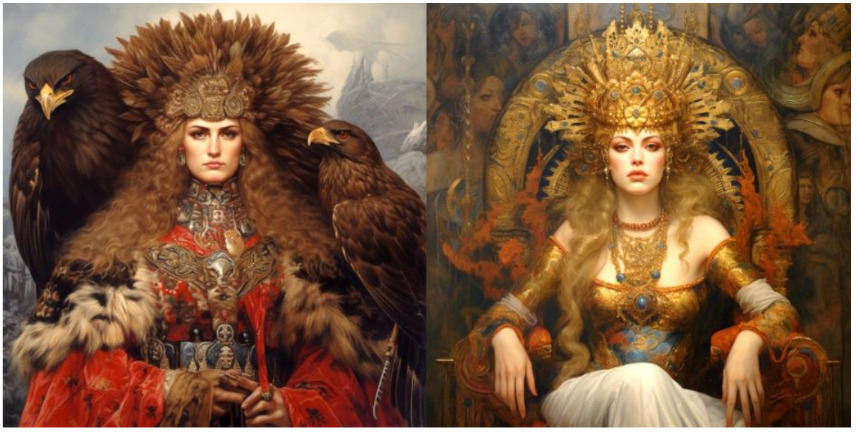
As the wife of the god Veles, she was the overseer (надзирательница) of the transition of souls from the real world to the otherworld. When a person’s life ends, the soul departs from the mortal body and arrives at the “Veles pasture.”
Veles and Mokosh greet the souls and conduct a just trial (справедливый суд) of their ancestors, where they determine a new destiny based on past deeds so that in the future life, the soul will learn its lessons.
She fostered (способствовала) family well-being, the birth of children, and all typical female occupations, particularly spinning and weaving, which for many centuries have been the primary responsibilities (обязанности) of women.
In ancient times, she was revered (почитали) by those who had to sew clothes for all family members themselves. First, they would process flax, then make yarn from it, spin threads from this yarn, and weave cloth from the threads on a homemade loom. And finally, they would sew clothes from this fabric. Women would gather at spinning wheels on long winter evenings to spin more threads because families used to be large, and a lot of fabrics were needed. Therefore, only women worshipped Mokosh and asked her for aid (помощь) in their difficult household chores. Of the days of the week, Friday was dedicated to Mokosh – on this day, women did not spin or wash so as not to offend their patroness.
Stribog (Стрибог) is the ruler of the winds, who was brought into existence (был рожден) by Svarog from a spark of light caused by a hammer blow on Alatyr (Алатырь).
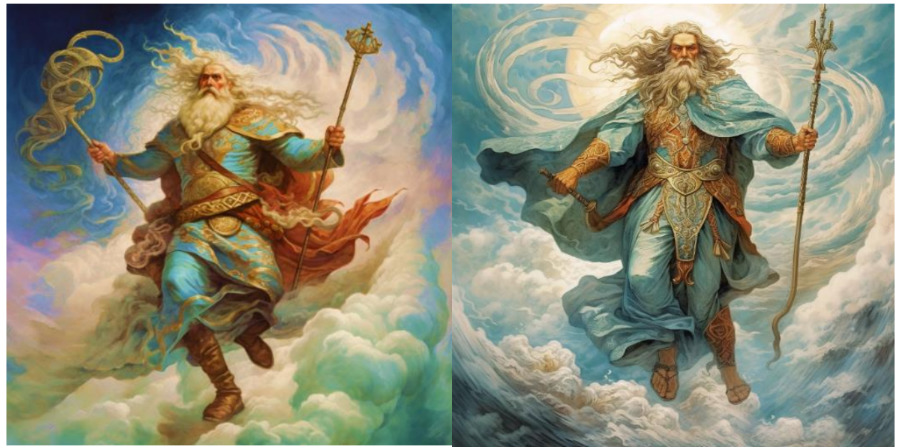
Stribog dwells (обитает) in the world of Prav (Правь), where he opposes all evil and its associates.
He is an adversary (противник) of intruders and violations of laws. The symbol of Stribog is a bow and arrow.
He does not always exhibit (проявляет) only his bright side. In ancient times, seafarers and merchants who had to travel long distances by sea particularly revered (чтили) Stribog because they were aware of his destructive capacities (способности). This god could instigate (вызывать) storms, raise waves in the ocean, create blizzards, bend and break trees, and spread fire.
The god Stribog was also worshipped by the Magi. This was due to the fact that, in the view of the ancient Slavs, the wind was a conductor of spiritual energy.
The Magi revered Stribog as the guardian of the balance of natural forces since his winds could also shed rain, bringing life-giving moisture to the earth, but they could also, when raging (свирепствуя), demolish everything in their path. Stribog seemed to be the embodiment (воплощение) of the unity between wisdom and emotion.
He is married to Nemiza.
Nemiza (Немиза) is the Goddess of the air and winds.
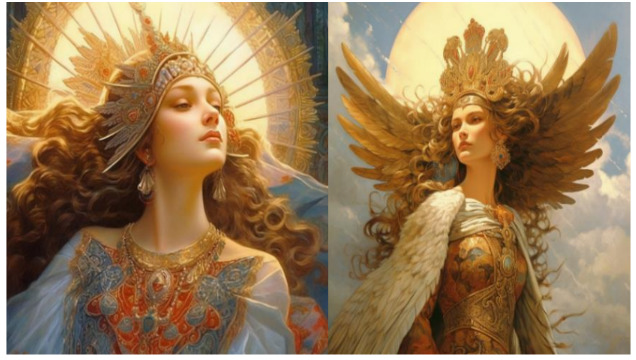
Her head is adorned (увенчана) with rays and wings, and a bird in flight is depicted on her chest. Light as a feather, she herself sometimes transforms (превращается) into a feather, resting in the air.
When, in the heat of the day, a slight coolness suddenly touches the forehead, it is Nemiza who is bestowing her favor, lazily flapping her wing. She is not quarrelsome and allows the winds to frolic without interfering in their affairs. However, if they quarrel excessively (слишком) and spin a frenzied (бешеный) carousel, she will intervene and restore order.
There is no other lore (сведений) regarding this deity.
Yarilo (Ярило) is the primary god of vegetation, fertility, and spring, and was also associated with war and harvest. It is believed that he is the lost son of Perun. It is said that Yarilo was stolen from his father and taken to the world of the dead, where he was adopted and raised by Veles, an enemy of Perun. Yarilo and his sister Morana are associated with the end of winter and the beginning of spring.
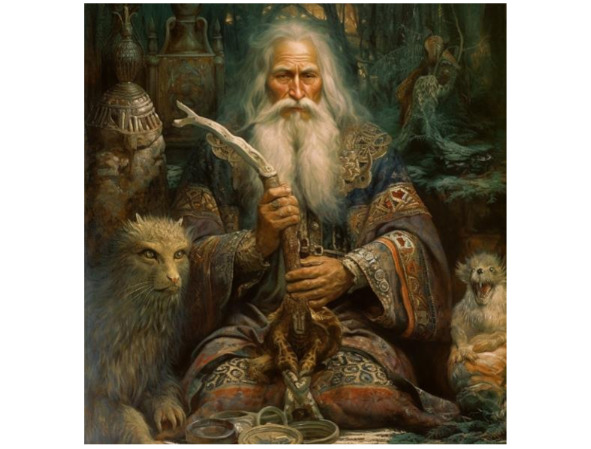
Chur (Чур) is the guardian god of Slavic clans.
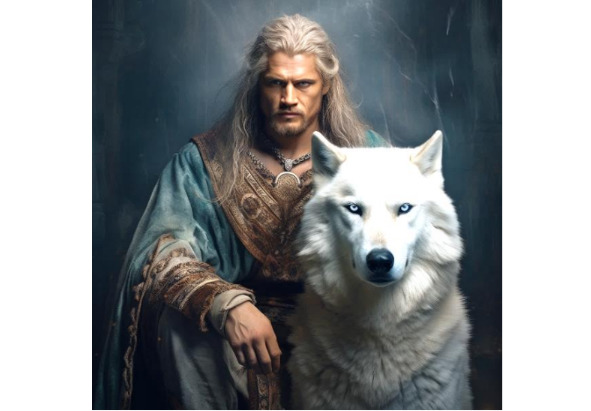
According to beliefs, Chur watches over (наблюдает) kind people and is closer to humans than other gods, enabling (позволяя) him to notice danger in time and inform other gods. Thus, through the intervention (вмешательство) of Chur and Veles, a system of divination (гадания) emerged, which aids in looking into the future to protect oneself from trouble.
He is sometimes associated with the spirits of the Ancestors. The word “chur” is also heard in the word “ancestor”—that’s how we refer to our forefathers. Furthermore (кроме того), the figure-image of the ancestral spirit on the Slavic altar is occasionally called a Chur.
Chur primarily (главным образом) communicates with spirits that dwell (обитают) near people: brownies, goblins, water sprites, and mermaids. From them, he learns much about what is happening in the human world. He is amicable with Veles, who enjoys wandering throughout the world of Reality. God also turns to wise Veles for assistance (помощь) when it is necessary to determine how to protect people from danger.
He is frequently (часто) mentioned in northern epics. While he does not participate in the major battles of the Slavic Gods, people often encounter (встречаются) him and know him better than other gods. It is said that Chur, the Guardian of People, can alter (изменять) his appearance. Most often, he appears as a white-bearded old man, but he may seem like a young man or even transform into a white wolf. You can always identify (определить) a Chur by his bright blue eyes.
In a perilous (опасная) situation, the Guardian is the first to be called upon (призывают). The tradition of addressing him is still alive in the Russian language, even if many people are unaware of its origins. “Chur me!” – we say, wanting to avoid danger. These words serve as the best protection against evil spirits, which the Slavs call nav. After all, he is the god who was created to safeguard people from evil.
Other words, “Chur, mine!” – we say when we want to indicate (показать) that something is ours, to assert our rights to it. We also remember Chur as a god, the guardian not only of life but also of human property.
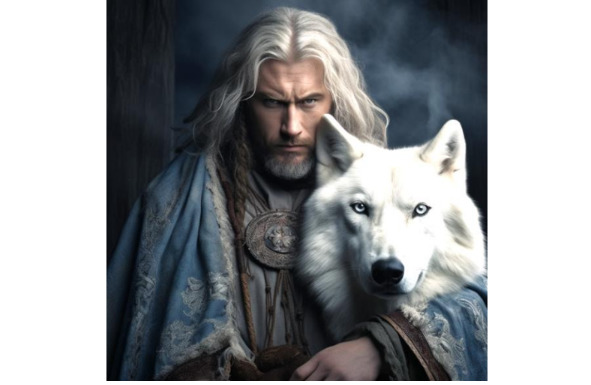
July 27, Churov Day – this day is invariably (неизменно) spent together, with the entire family. Traditionally, on this day, landowners inspect their possessions, erect (устанавливают) new boundary markers, bring offerings, and later return to the house for a joint dinner with their relatives.
There is an amulet of this god, and anyone who wishes to appease (умиротворить) him can carry it or hang it somewhere in their home. It resembles (напоминает) a figure of a bearded brownie, with his hands on his belt. What this amulet protects is guarded by the gods. Enemies will not steal or take away the goods acquired by the owner. The amulet safeguards (защищает) the residents of the house from gossip and envy and drives away malevolent people.
The image of this household god appears in Slavic cards, which are used for divination and magic.
Bereginya (Берегиня) is the great Old Russian Goddess who gave birth to all things on Earth.
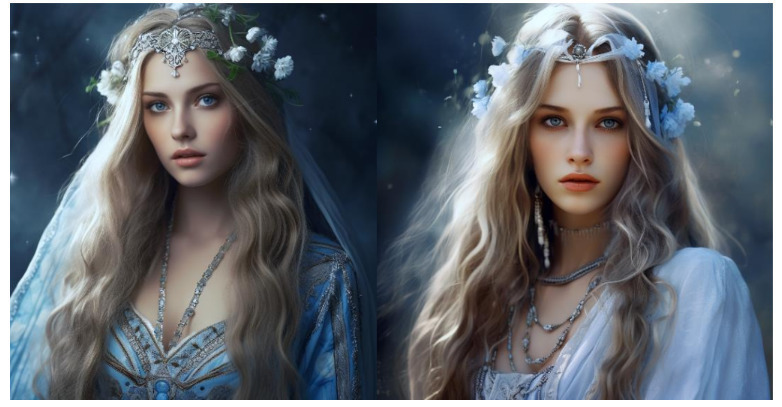
She consistently (неизменно) appears surrounded by radiant (сияющими) horsemen, embodying the power of the Family, the brilliance of the Sun, and the triumph of Life. The goddess Bereginya is revered (почитается) alongside Makosh, Lada, and Rod, placing her on par (наравне) with the Highest Patron Gods of the human race. The image of Bereginya is closely intertwined (тесно связана) with the Russian birch, which has absorbed the light and radiance of the sky. The goddess Bereginya gave rise to many forest Mermaids-Beregin. Beregini mermaids are very similar to their river sisters: they are also girls who died before marriage or girls who committed suicide due to unrequited (неразделённая) love or infidelity (неверность). During the Russian Week, Beregini, together with Mermaids, come to our world to stroll (прогуляться) and see their relatives. They sit on the shores of lakes and rivers, comb their hair, weave wreaths, and lure young men into their arms, who are driven mad by their unearthly beauty and terrible cruelty. On the day of Ivan Kupala, the Beregini Mermaids depart from their native lands and return back.
In literary accounts (описаниях), Bereginya was “depicted” with peace and tranquility on her face. In her hands, there will invariably (неизменно) be either a flower (or a wreath of herbs and flowers), a spike (колос), or a noble bird. In some legends, it is mentioned that ghouls (упыри) were fiercely afraid of her, as they bring pestilence (мор) and death to people. Therefore, offerings were brought to her to protect her family, home, and the entire village. After all, she alone can halt (остановить) the impending (надвигающаяся) evil force.
She could bestow (даровать) riches and protect the harvest. When sending their husbands off to war, women themselves performed the role of beregin – they crafted (изготавливали) various charms and clothing, and so on with their own hands while reciting (произнося) incantations (заговоры).
Bereginya was invoked (обращались) for the safety of treasures buried in the ground; women made dolls upon which they recited incantations with the names of the beregins, as well as asking for the goddess to accompany their relatives on long journeys.
Kupala (Kupalo, Купала and/or Купало) is the radiant god of the summer Sun, light, warmth, love, fertility, and purity, as well as the patron of the elements of water and fire in the Russian tradition.
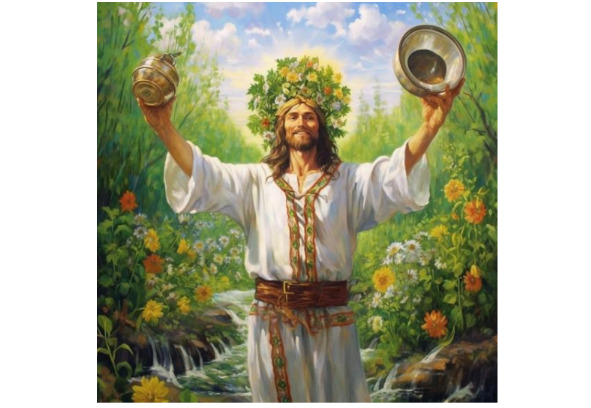
Since our ancestors believed that on the night of Ivan Kupala (July 7th), water, fire, flowers, and herbs acquired (приобретали) magical properties — becoming able to cleanse from sins and heal all diseases — most of the rituals and traditions were connected with them.
For example, a holiday was inconceivable (немыслим) without a bonfire and jumping over it. Moreover, young people particularly enjoyed jumping through fire: after all, it was an opportunity (возможность) to display their prowess (доблесть). Furthermore (кроме того), our ancestors were certain that such a jump could cure diseases and the evil eye, while simultaneously making the person who performed it happier and luckier. Girls also favored (любили) this amusement (забаву), believing that it could enhance (улучшить) their beauty and attractiveness.
However, this pastime has always been especially popular among lovers: it was believed that if a young couple held hands and jumped over the fire without any hesitation, then they would be inseparable (неразлучны).
Another obligatory (обязательный) feature of the festive program has always been mass bathing. The magical properties attributed to water were not the only reason for our ancestors to plunge into the nearest body of water: they believed that on the shortest night of the year, evil spirits abandoned (покидают) all lakes and rivers.
The change of times or the confrontation of good with evil
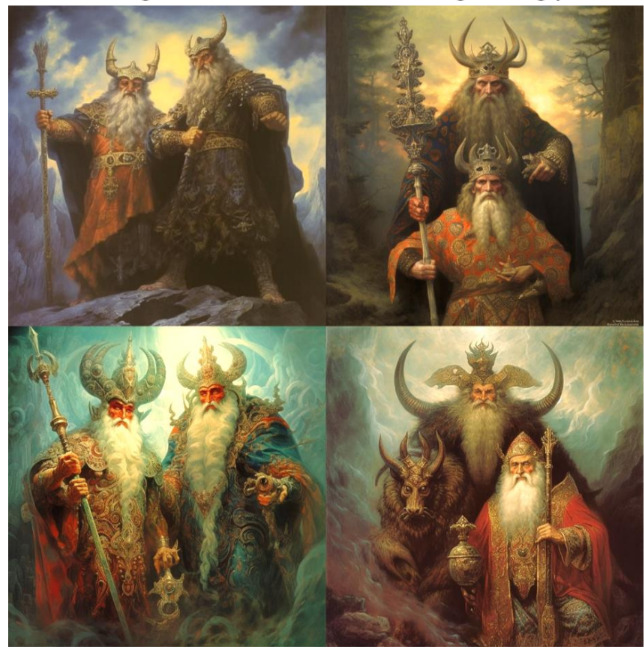
Other beliefs of the Eastern Slavs.
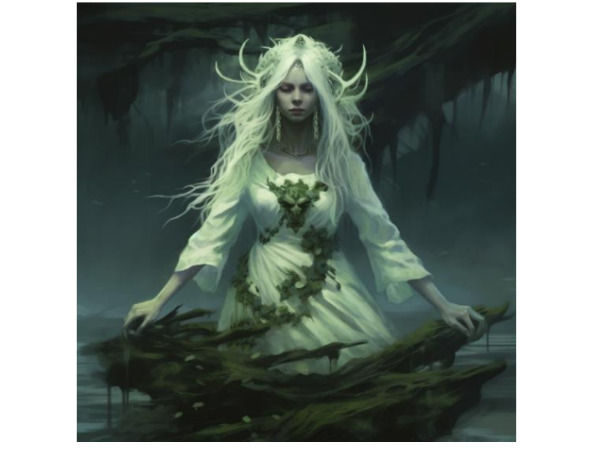
The ancient Slavs greatly revered (почитали) their ancestors. They deified (обожествляли) the long-deceased founders of the family and firmly believed that their spirits protected the entire family from troubles. Our ancestors also thought that the spirits of the dead could walk among the living. They envisioned (представляли) them as mermaids. Indeed (действительно), all the cartoon characters of our time presented in the form of a goblin, a vodyanoy (water creature), and a kikimora are nothing more than the ancient Eastern Slavs’ imaginings (представления) of malevolent (злых) spirits.
Kikimoras have several origins according to Slavic traditions:
Babies born with defects, children who died during childbirth, were premature, or were deformed.
Children created from immoral relationships.
Children who were disowned by their parents and were abducted by evil spirits.
It was believed that kikimoras did not appear without cause in a person’s home. They settled where a child had died or a person had hanged themselves for some reason.
The kikimora’s favored occupation, according to Slavic mythology, is weaving and spinning. People attributed (приписывали) the causes of all their illnesses and troubles to the tricks of these malevolent spirits or the wrath of the gods. Therefore, they sought treatment through (прибегали к) spells, incantations, and sacrifices. To protect themselves, they created (изобретали) charms. And in their homes, a figure of a brownie was installed in a prominent place, which symbolized the spirit of a deceased ancestor, and they were certain that it would protect their home from thieves and fire and safeguard their peace.
Annual wheel — all Slavic holidays
The main pagan Slavic holidays were/are:
Kolyada (Коляда) or the Birth of the Sun.
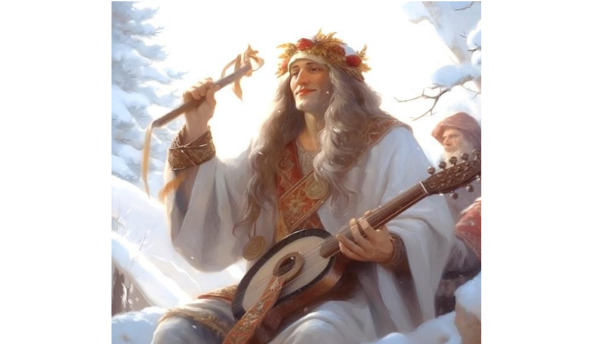
Kolyada, or the birth of the Sun, was celebrated on the day of the winter solstice (зимнее солнцестояние). December 21st has long been regarded as the day marking the beginning of astronomical winter.
After December 21st, the god Kolyada was believed to be born, and a festival (праздник) was organized in his honor, accompanied by rituals. People sang songs and glorified the deities (божества). The ancient Slavs rejoiced that, starting from December 21st, the Sun would shine for longer periods, for which they held him in high esteem. When Christianity became the state religion, Christmas was celebrated on this day. In the pagan circles of the ancient Slavs, this day began to signify (означать) the birth of the gods.
On December 21st, the ancient Slavs rid themselves (избавлялись) of all that was old and made wishes for the new year. The three days before and after the winter solstice were considered particularly potent (сильными), so wishes made on these days were believed to have a higher probability of fulfillment.
Yuletide days (Святки-колядки, also Koliadki) is a multi-day holiday that was divided into two parts. From January 7th to January 14th, on holy evenings, they caroled and arranged girlish fortune-telling (гадания), and from January 15th to January 19th, they continued to have fun but feared the terrible evenings — the time of revelry (разгула) for evil (зло).
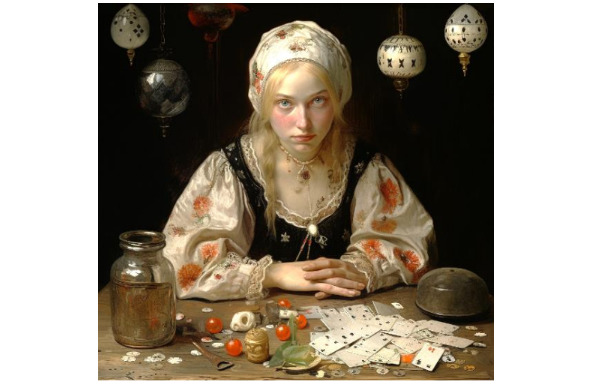
Each family eagerly (с нетерпением) awaited carolers, prepared treats for them, and listened to carols with sincere joy.
On Yuletide days, an empty table was considered a bad omen (приметой), so a ritual roll (обрядовый калач) was always present on it, which was offered to those who came caroling. The hospitable (радушные) hosts believed that the more guests gathered in their house, the better the chickens would sit on their eggs.
After a cheerful tour of the houses, the youth (молодёжь) gathered in a communal hut (изба) for a general feast (пир), where they shared and consumed everything that the villagers (односельчане) had given them. Then, dressed in new attire, the young people danced to avoid crop failure, listened to fairy tales, and pondered their fate.
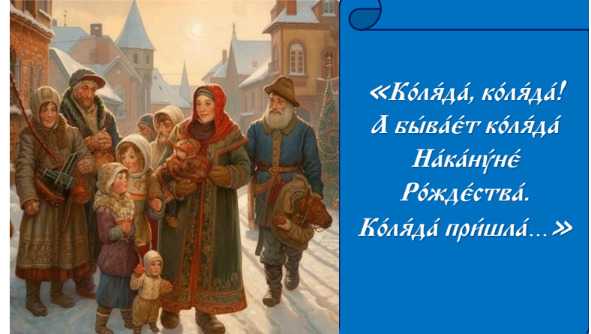
Maslenitsa (Масленица) served as a symbol of the winter season’s farewell (проводы), observed from March 3rd to 9th.
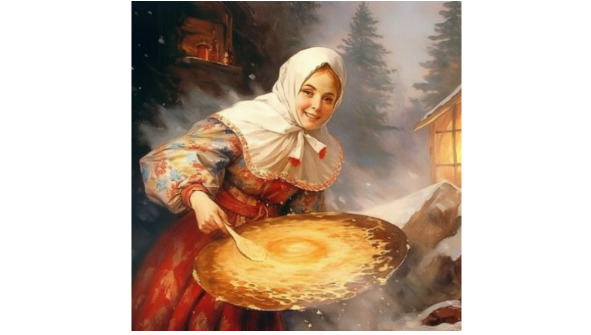
Maslenitsa is one of the most joyous (радостный) holidays of the year, widely celebrated throughout Russia.
It reflects centuries-old traditions, carefully preserved and passed down from generation to generation. This is a week-long holiday — a rite (обряд) with round dances (хороводы), songs, dances, and games, dedicated to bidding farewell to winter and welcoming spring.
In essence (по сути), Maslenitsa is an ancient pagan holiday. It is believed that originally Maslenitsa was associated with the day of the spring solstice, but with the adoption of Christianity, it began to precede Lent and depend on its timing.
In Russia, it has long been customary to celebrate the changing of seasons. Winter has always been a challenging time for people: cold, hunger, and darkness. Therefore, the arrival of spring was particularly rejoiced, and it was necessary to celebrate it. Our ancestors (предки) said that it was difficult for a young Spring to overcome the old, treacherous (коварную) Winter. To help Spring drive away Winter, they organized joyous festivities (гулянья).
Our ancestors revered (почитали) the sun as a god because it gave life to everything. People rejoiced at the sun, which began to appear more and more frequently (чаще) with the approach of spring. Therefore, a tradition arose (возникла) in honor of the spring sun to bake round treats (угощения), shaped like the sun.
Another participant (участник) in the Carnival festivities was a bear. People would dress one of the men in a bearskin (шкуру медведя), and he would dance. Later in the cities, a live bear was also exhibited (выставляли) on the square. The bear became one of the symbols of Maslenitsa and the onset of spring because in winter the bear sleeps in a den (берлога), and in spring, it awakens. The bear woke up — so spring had come.
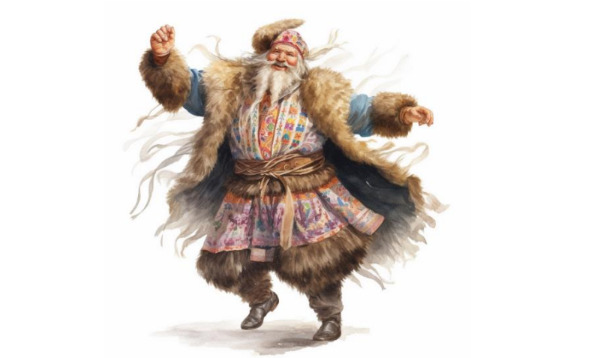
And, of course, the symbol of the holiday was an effigy (чучело) of Maslenitsa, made of straw (солома) and dressed in bright clothes. The effigy personified (представляло/олицетворяло) the Maslenitsa holiday itself, as well as the harsh (суровую) winter (Morena). On the last day of Maslenitsa, the effigy was burned on a ritual bonfire (ритуальный костёр).
It was always customary (было обычаем) to eat as much as possible and have fun. Our ancestors believed that those who did not eat and did not have fun would live the coming year poorly and joylessly.
Great Day (Велик день) – the day of the vernal equinox (весеннее равноденствие) and the beginning of spring.
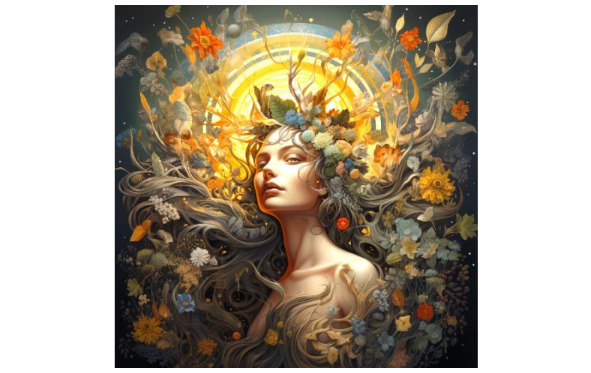
It was celebrated on March 21st; at this time, the day is equal to the night — the vernal equinox. It was customary to lead round dances, various games, and praise pagan gods. On this day, a wheel in flames was launched from a mountain or any high point of the landscape. It was considered a symbol of the Sun, and the flames carried forth (несли) the tongues of light.
The birds on March 21st held special significance since it was believed that the souls of the departed inhabited (обитали) the birds. To appease (умиротворить) the ancestors, the birds were fed grains and breadcrumbs. In the late afternoon, people gathered on the hills and feasted with the souls of their ancestors.
The holiday played a significant role for those who decided to get engaged. March 21st in ancient times was considered the most popular for holding a wedding. In addition, even now this day is very popular for couples to commit to marriage. There is an old Russian proverb about this, which reads as follows: “The one who gets married on a Great day will never get divorced.”
The holiday was also called Krasnaya Gorka. On March 21st, no one worked; people rested throughout the day, as work was considered a sin. The entire day had to be spent outdoors with a cheerful company.
Mermaid Week (Русальная неделя) – held before June 21st.
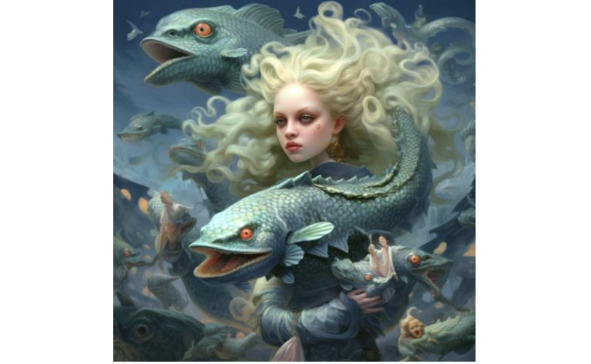
Бесплатный фрагмент закончился.
Купите книгу, чтобы продолжить чтение.